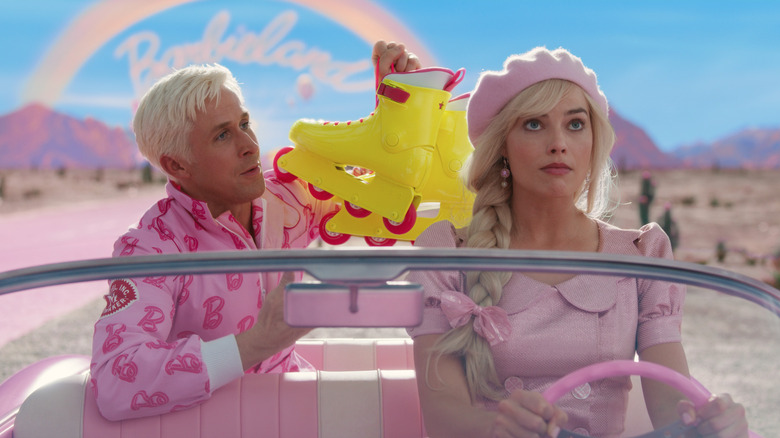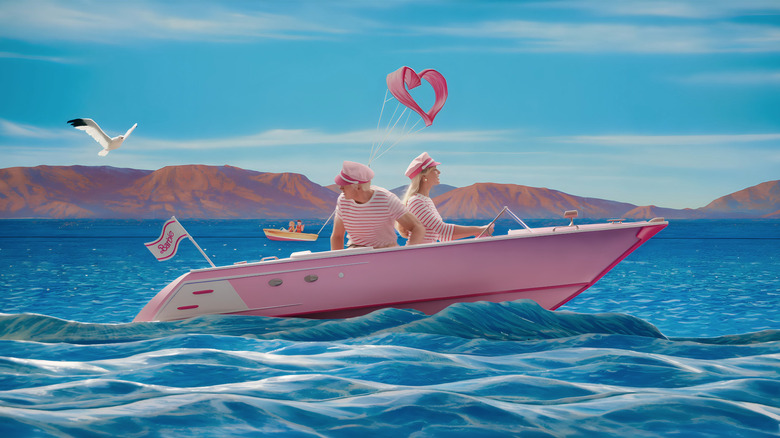Barbie: Why Greta Gerwig Called The Truman Show Director For Advice
"Barbie" isn't the first toy to be adapted into a feature film, but given the subject matter, it doesn't fit into seat-filling genres like action (hello, "Transformers") or horror (we salute you, "Ouija"). Barbie dolls are also a slippery artifact in the cultural imagination, both a beloved emblem of childhood and the product that Gloria Steinem once called "pretty much everything the feminist movement was trying to escape from."
For director Greta Gerwig, crafting a movie from the decades-old doll meant navigating the razor's edge between feminist satire, doting fan service, and sly Mattel marketing. She opted to lean into the doll's mystique of artifice for her direction style. Life in plastic, after all, is fantastic.
As the "Barbie" trailer demonstrates, the film exists in a surreal neon pink paradise that maintains, as Gerwig put it to The New York Times Magazine, "the comfort of fundamentalism." She continued, "You never have to wonder what you're meant to do," hinting at a fate that could put one at ease or in a state of abject terror.
In crafting her perfectly imperfect "Barbie" universe, Gerwig looked to other films set in composed, artificial realities. One influence was the Jim Carrey-starring "The Truman Show." Gerwig reached out to the film's director, Peter Weir, reportedly asking him how to "execute something that's both artificial and emotional at the same time." Weir, after all, knows all about constructing universes with the facade of free will.
Gerwig was impressed with the artifice of The Truman Show
"The Truman Show" is a blueprint for on-screen simulated reality if there ever was one. The sci-fi satire follows Truman Burbank, an ordinary man whose life is actually a television show. It's clear that "The Truman Show" and "Barbie" share some of the same DNA, as each features a protagonist grappling with the knowledge of a world outside of their own.
In a conversation with Letterboxd, Greta Gerwig expounded upon Peter Weir's advice. "He talked to me for a long time about how he shot it and how they made it work," she recalled. "They shot it actually outside, but they hung lights, so it would feel like it was in a studio."
Beyond "The Truman Show," Gerwig cited other influences, including "The Umbrellas of Cherbourg" and "Singin' in the Rain." The Technicolor musicals' elaborate set pieces feel real, yet also cartoonish and staged. Gerwig sought to make the entire environment of "Barbie" feel "fake, but really fake," she said in the same New York Times Magazine interview. So fake that you could reach out and grab the playful analog effects.
In general, the eye-popping colors of '40s and '50s films made a huge impression, as well as the painterly backdrops of "The Wizard of Oz." "It does something that I wanted to emulate," Gerwig said to Letterboxd, "which is these incredible sound stages and these painted skies and this sense of ... I say, 'authentically artificial,' which I think is very beautiful and emotional."

